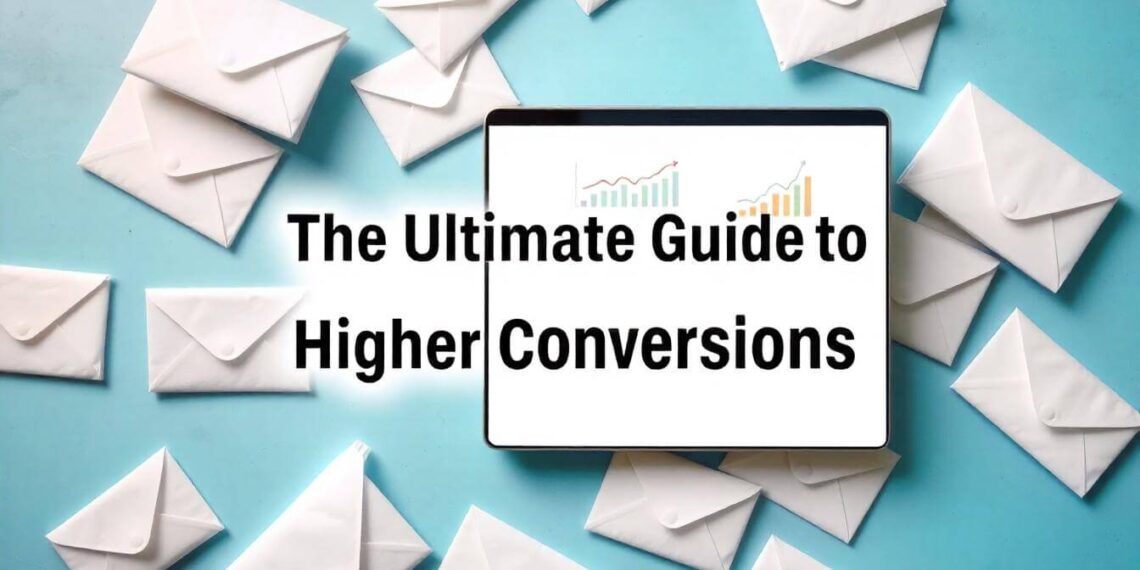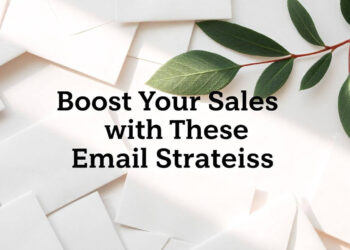At present, the world is highly competitive and saturated digitally and no matter what your content, products or products, email marketing remains a strong tool for nurturing leads, driving sales and increasing customer relationships. High conversion rate email campaigns are achievable, and they bring value to both the businesses and their customers, when you have an effective strategy. And in this ultimate email marketing guide, I’m going to give you some actionable tips that will help you improve conversions.
What is Email Marketing?
Email marketing is sending emails to a list of subscribers to push your products, news, or build relationships. It’s cost effective, personalized and very direct method of communication with your audience.
Why Email Marketing Matters?
High ROI: If you spend $1 in email marketing, you average ROI of $36.
Direct Communication: Unlike social media, where email is sent to a user’s inbox, email lands directly.
Personalization Opportunities: Emails can be personalized to give a specific user information they want based on some of their preferences, some of their behavior, or even some of their demographics.
Measurable Results: Track open and click through rates (CTR), and conversions.
What Lies At the Heart of a High Converting Email Campaign
1. Build a Targeted Email List
Your emails go to the right audience via a targeted email list. Rather than fishing a broad net just to catch something, try concentrating on subscribers that genuinely want your offers.
How to Build Your List:
Lead magnets (eBooks, discounts etc.)
Include optimizations for sign up forms on your website.
Through social media ads and landing pages collect emails.
2. Write Craft Irresistible Subject Lines
Recipients are graced with that subject line which was the first thing they saw. This tells them whether they’ll open your email or not.
Tips for Effective Subject Lines:
Short and engaging (50 characters or less).
They use numbers and actionable words.
Create a sense of urgency (e.g., “Only 24 Hours Left!”).
3. Personalize Your Emails
Addressing the recipient by name is just the start in how you can personalize your messages. It’s about presenting content that matches what they need.
Examples of Personalization:
Recommend products by using customer data.
You can send a perfect birthday or anniversary emails with special discounts.
Use behavior, location, or purchase history to divide your list.
Email Content Optimisation for Conversions
4. Let’s focus on Clear and Concise Messaging
The email that you send should quickly communicate value. Don’t make readers’ eyes heavy with too much text.
Structure Your Email:
Aouİin with a great first line.
Consequently, if you want your writing to be easy to read, use bullet points or short paragraphs to do so.
Don’t forget to end with a highly compelling call to action (CTA).
5. Design for Mobile Devices
More than 70 percent of emails are opened on mobile devices. It is designed in mobile friendly way to create a smooth user experience.
Mobile Optimization Tips:
Responsive email templates are used.
CTAs must be easily clicked.
Don’t load big images that slow down to load.
6. Have a Clear Call to Action (CTA) included
You power it with a strong CTA that tells the reader what to do next: purchase, sign up, or download a resource.
CTA Best Practices:
You should make it visually different (e.g., using buttons).
Use action-oriented phrases like “Shop Now” or “Download Free Guide.”
Avoid overcrowding in the email with more than one primary CTA.
Automation for Boosting Conversions
7. Use Drip Campaigns
Automated email series sent over a specified period are called drip campaigns. They nurtures leads and put them through the sales funnel.
Examples of Drip Campaigns:
For new subscribers, a welcome series.
E-commerce abandoned cart reminders.
Just a few examples of email you can send, such as reengagement email for the inactive users.
8. Test and Optimize
Success in email marketing is only possible if you are continuously improving. Always test different parts of your campaigns.
A/B Testing Ideas:
Subject lines: Look at the performance between two variations.
Email design: Play with layouts, colors and images.
CTAs: Try different wording, or different placement for buttons.
Measuring the performance of Email Campaigns
Email marketing performance analysis not only helps us see what works, but also what doesn’t.
Key Metrics to Monitor:
Open Rate: Number of recipients who opened your email.
Click-Through Rate (CTR): Recipients that clicked links as a percentage.
Conversion Rate: Proportion of the users who do the wanted action.
Bounce Rate: The percentage of emails that couldn’t be delivered.
Unsubscribe Rate: Percentage of recipients who were bailed out.
Tools for Tracking Metrics:
Using Google Analytics to track traffic on your website from emails.
Email marketing platform like Mailchimp, Constant Contact, or HubSpot.
Common Pitfalls to Avoid Through Best Practices
Avoid Spamming
High unsubscribe rates are often the result of sending too many emails or sending emails that don’t make sense to your audience. Take quality, do quality. Stick to a consistent schedule.
Comply with Legal Regulations
Make certain your emails follow laws such as the GDPR or CAN-SPAM Act. Always hold an unsubscribe link and abide by user preferences.
Deliver Value
Send value (information, deals, updates) in every email.
Email Marketing Future Trends
AI-Powered Personalization
Exploiting the data from the user, AI tools can generate hyper personalised email experiences.
Interactive Emails
Quizzes, surveys, embedded videos… all add to the user’s engagement.
Focus on Privacy and Security
Email practices that are not transparent will reduce trust with your audience and builds concerns around data privacy.
Conclusion
Email marketing is a vital part of business growth and has the ability to help you build relationships while increasing conversions. But you don’t have to go far to find campaigns that are not only capturing attention, but also driving action.






